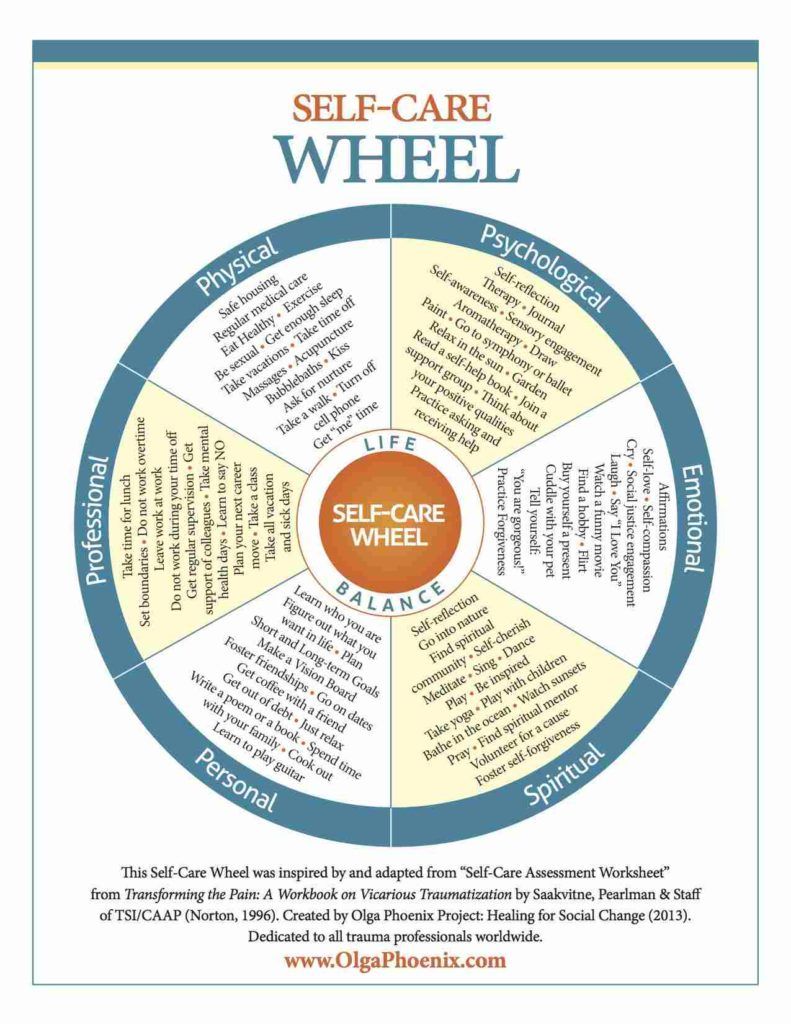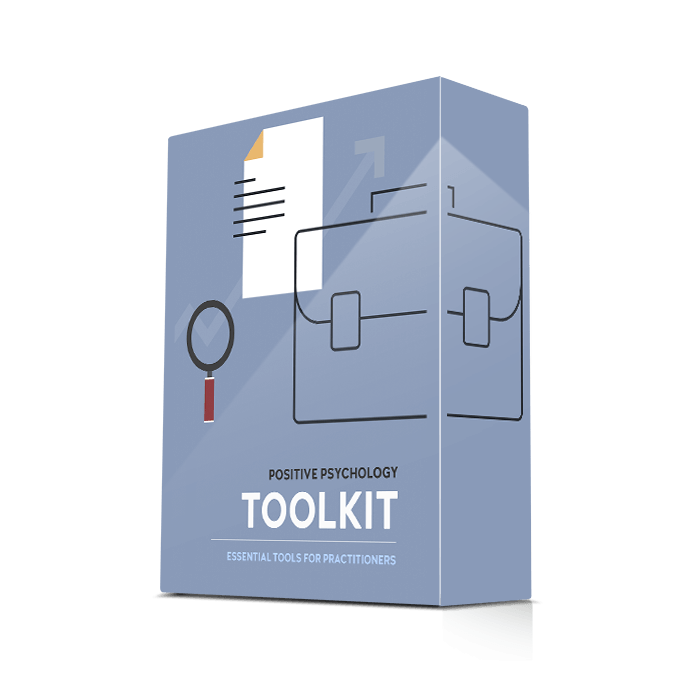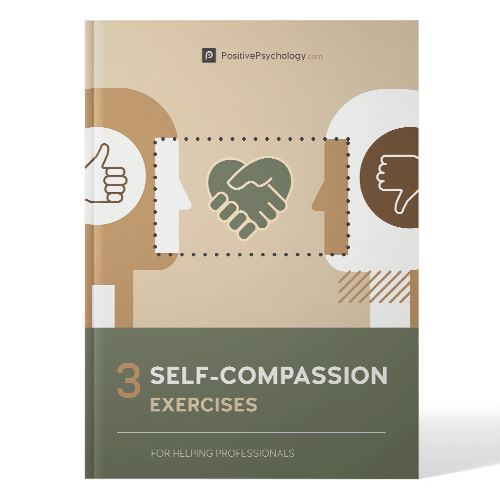

When Tess Kearns began to forget familiar faces and was only able to manage her daily activities with a to-do list – which she was continually losing – she knew that something was wrong.
Thankfully, the cause was not an underlying physical condition; instead, it was behavioral. Tess was approaching burn out.
Managing her two children, setting up a new business, learning additional skills, and keeping up with her mortgage repayments were proving to be too much.
We have all experienced similar times in our lives, and burnout is real.
Irritability, drinking to feel better, trouble sleeping, headaches, and a lack of energy are all early signs that you are heading toward a meltdown (Salvagioni et al., 2017).
The Mayo Clinic describes burnout as physical and mental exhaustion, often associated with a loss of identity and the sense that we are not accomplishing anything.
So, how do you stop? How do you take care of yourself?
In this article, we explore a wellness tool that helps you regain control and focus on your busy life. The Self-Care Wheel is a positive psychology tool for supporting a balanced life while maximizing potential.
Before you read on, we thought you might like to download our three Self-Compassion Exercises for free. These detailed, science-based exercises will not only help you increase the compassion and kindness you show yourself, but also give you the tools to help your clients, students, or employees show more compassion to themselves.
Work, parenting, education, and relationships are all sources of stress.
Research over the last two decades has confirmed the severe impact of our failure to handle situations in which we find ourselves.
Indeed, chronic stress at work is recognized by:
Self-care can help, but it needs to be planned, acted upon, and practiced (Myers, Sweeney, & Witmer, 2000; Windey, Craft, & Mitchell, 2019).
Healthy people strive towards growth, self-actualization, and excellence; it’s a natural, universal tendency (Maslow, 1970).
But all of us, at times, need help to get and stay there.
Wellness is about maintaining mental and physical fitness and having enough energy to meet occupational and personal commitments. The Global Wellness Institute (n.d.) describes it as “the active pursuit of activities, choices, and lifestyles that lead to a state of holistic health.”
In 2000, psychologists Jane Myers, Thomas Sweeney, and Melvin Witmer were concerned about deaths occurring in the U.S. as a result of poor lifestyle choices. They suggested an important shift in emphasis, from a disease and illness model to one of wellness and health.
In response, they created a tool called The Wheel of Wellness to help achieve a life defined by optimal health and wellbeing, “in which body, mind, and spirit are integrated by the individual to live more fully within the human and natural community” (Myers et al., 2000).
The wheel is a pictorial representation of wellness. Each spoke depicts an interrelated set of tasks that interact with the life forces affecting your life, including:
Wellness wheels remain accessible and helpful in the promotion of wellbeing.
Clarion University, for example, encourages students to use a copy of their wheel as part of their wellness program. Students are asked to consider how they manage their health in each of the following areas of their lives:
Recent research into healthcare has confirmed the value of the wellness wheel in promoting wellness and good health in nurses and, subsequently, better treatment of patients (Windey et al., 2019).
The Self-Care Wheel is similar to the Wellness Wheel and provides a structure for identifying and nourishing areas where you are either failing, surviving, or thriving.
The most widely used assessment wheel, created by the Olga Phoenix Project, is based on the work of Karen Saakvitne and Laurie Pearlman (described in Transforming the Pain: A Workbook on Vicarious Traumatization; 1996).

The Olga Phoenix Self-Care Wheel consists of two sheets, each containing a set of six dimensions placed on the outside rim of the wheel, including:
Each dimension represents an area of your life that, ideally, deserves daily attention.
The first sheet contains a suggested list of topics, placed between the spokes of the wheel below the relevant dimension. Each item is an inspiration or a prompt to take an action that promotes nurture in that area.
The second wheel is left blank for personalization.
A therapist or coach typically supplies both sheets to a client, but there may be times (to avoid bias) where only the blank sheet is given.

The Self-Care Wheel provides a useful starting point and ongoing focus for your self-care activities.
However, it is essential to make the wheel personal and to document follow-up actions that address dimensions negatively impacting your wellbeing.
Download Olga Phoenix’s free starter kit for a copy of the Self-Care Wheel.
PositivePsychology.com’s Self-Care Vision Board is particularly well suited to practicing self-care and completing a blank copy of the wheel.
Download the tool for free as part of our Self-Compassion Exercises Pack.
The Self-Care Vision Board exercise is a positive and practical way for you to personalize the list of items under each dimension (physical, psychological, emotional, spiritual, personal, and professional).
It consists of four steps:
Committing to taking care of yourself is one of the most effective ways to make self-care a lifelong priority. Use the My Self-Care Promise template to help clients formalize their commitment in the form of a contract.
The following exercises and downloads offer useful guidance for specific activities listed under each dimension:
The Self-Care Wheel is one part of a more extensive process on your journey to wellbeing and can be embedded in the following three steps:
Identify areas that require additional attention for your self-care and are necessary for the completion of the Self-Care Wheel.
Plan to transform those areas of your life that are currently failing, or surviving, into ones that are thriving.
ReachOut provides a practical guide for developing a self-care plan along with a free downloadable template.
A plan has no value unless acted upon.

The Self-Care Wheel identifies actions and activities to perform – or a set of conditions to be met – that contribute to the wellbeing of each of your dimensions and your overall wellness.
For example, your spiritual dimension can be nurtured through yoga, self-forgiveness, and nature, while your psychological state will benefit from self-awareness, relaxation, and a focus on positive qualities.
Review each of the following sections for a list of activities that nurture or nourish the six dimensions of your Self-Care Wheel.
Note that these are suggestions. Some actions may be more or less appropriate and can be added to or removed from your list.
The list is modified from the Self-Care Wheel created by Olga Phoenix but also contains links to articles within PositivePsychology.com to further your understanding and provide additional guidance.
Other useful advice and practical tips are available from the University of California and Princeton University.
Your physical health is vital to your overall wellbeing, And, according to the American Nurses Association, it is not only the absence of disease, but also lifestyle choices that avoid preventable illnesses, maintaining a balanced mind, body, and spirit.
Things you can do to nurture yourself:
Consider putting in place:

The Positive Psychology Toolkit© is a groundbreaking practitioner resource containing over 500 science-based exercises, activities, interventions, questionnaires, and assessments created by experts using the latest positive psychology research.
Updated monthly. 100% Science-based.
“The best positive psychology resource out there!”
— Emiliya Zhivotovskaya, Flourishing Center CEO
Psychological wellbeing is crucial to not only your state of mind, but also your physical health. According to the American Psychological Association, psychological wellbeing involves being both happy and content, with low levels of distress, good mental health, and quality of life.
Things you can do to nurture yourself:
Consider putting in place:
Emotional wellness can be described as understanding and being aware and comfortable with your feelings, and being able to express emotions constructively.
Things you can do to nurture yourself:
Consider putting in place:

These detailed, science-based exercises will equip you to help others create a kinder and more nurturing relationship with themselves.
Download PDF
By filling out your name and email address below.
Spiritual wellness has a different meaning for each of us. Typically, it is about having values and beliefs that provide meaning to your life and having the opportunity and motivation to align your behavior to them.
Things you can do to nurture yourself:
Consider putting in place:
Being engaged intellectually and at a profoundly personal level in your actions, environment, and social group is likely to promote growth and wellbeing in your personal domain.
Things you can do to nurture yourself:
Consider putting in place:
Wellbeing in the professional domain is most likely when your work and studies leave you feeling fulfilled, while you continue to grow, learn, and make meaningful contributions.
Things you can do to nurture yourself:
Consider putting in place:

Help your clients develop a kinder, more accepting relationship with themselves using these 17 Self-Compassion Exercises [PDF] that promote self-care and self-compassion.
Created by Experts. 100% Science-based.

Headspace is a top-rated, subscription-based app that provides a mental wellbeing program for individuals and teams along with support for mindfulness meditations.

This subscription-based app, based on The Anxiety Solution by Chloe Brotheridge, provides an anxiety toolkit, covering practices to help you focus on self-care, overcome anxiety and worry, practice mindfulness, and improve your sleep.

Grateful offers tools to help you manage anxiety, stress, and work through worries. Use the tools included to calm your mind and balance your body.

Use the Gratitude app to capture the things in your life for which you are grateful and focus attention on the positive things in life.
Balance in life is crucial.
When you have it, you can divide your time and energy across all areas of your being, ensuring an appropriate focus on family, learning, spirituality, career, etc. while nurturing overall wellness.
However, when balance falters, parts of your life remain unnourished. They begin to fail, impacting other areas and your overall wellbeing. You begin to burn out.
If you step back and look at your life, you can see the warning signals – overeating, over-drinking, lethargy, stress, irritability – all are signals that change is needed.
And yet, if you recognize the signals, then you can do something about them.
Firstly, download the Self-Care Wheel, and along with some of the other tools introduced, identify and document the actions and steps that will help you find balance and ultimately lead you to flourish in life.
You may not have time or resources to play out all the actions or put in place every condition, but be realistic. Plan how you are going to perform the activities that are going to give you the big wins. Once they are in place, you can begin to find other ways to include the smaller, complementary, positive changes in your life.
You have what it takes to make your life more complete, but it takes self-care.
Perhaps most surprisingly, the crucial takeaway is not that you have the potential to put in place a routine of self-care, but that you deserve it.
You, like the rest of us, are worth investing in.
So, what’s stopping you? Use the Self-Care Wheel to take stock, regain focus, and take control of your busy, precious life.
We hope you enjoyed reading this article. Don’t forget to download our Self-Compassion Exercises for free.
References